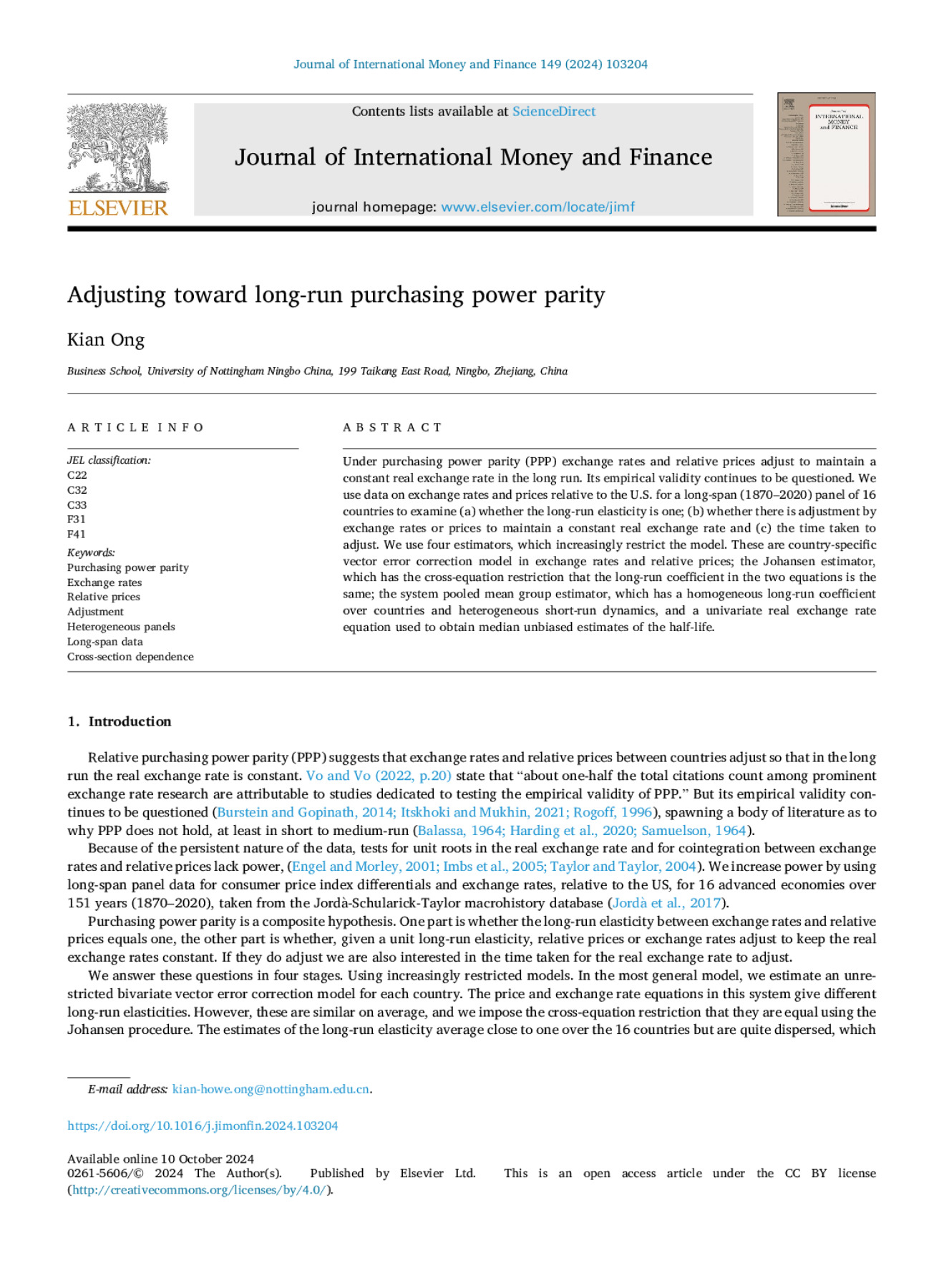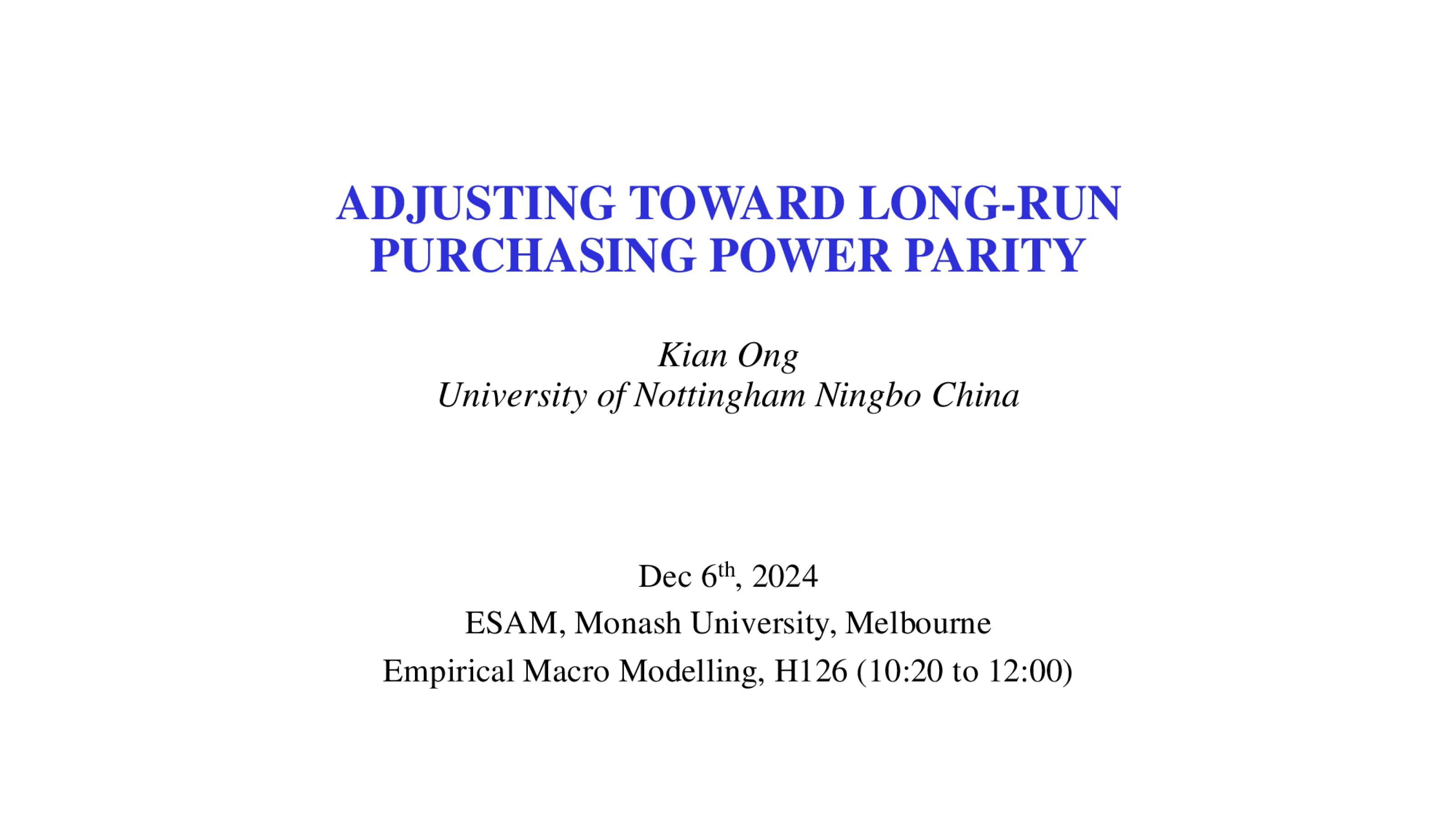2024 Australasia Meeting, Melbourne, Australia: December, 2024
Adjusting toward long-run purchasing power parity
Kian Ong
Under purchasing power parity (PPP) exchange rates and relative prices adjust to maintain a constant real exchange rate in the long run. Its empirical validity continues to be questioned. We use data on exchange rates and prices relative to the U.S. for a long-span (1870–2020) panel of 16 countries to examine (a) whether the long-run elasticity is one; (b) whether there is adjustment by exchange rates or prices to maintain a constant real exchange rate and (c) the time taken to adjust. We use four estimators, which increasingly restrict the model. These are country-specific vector error correction model in exchange rates and relative prices; the Johansen estimator, which has the cross-equation restriction that the long-run coefficient in the two equations is the same; the system pooled mean group estimator, which has a homogeneous long-run coefficient over countries and heterogeneous short-run dynamics, and a univariate real exchange rate equation used to obtain median unbiased estimates of the half-life.
Preview













































